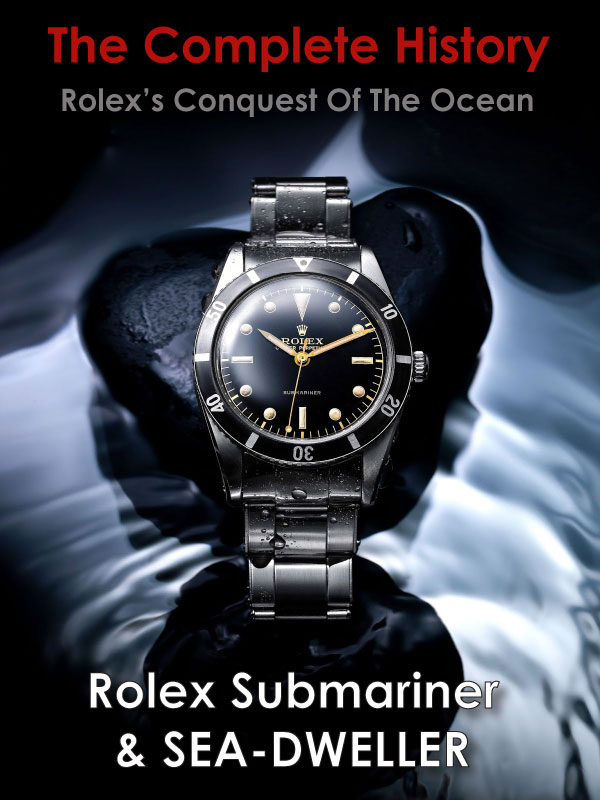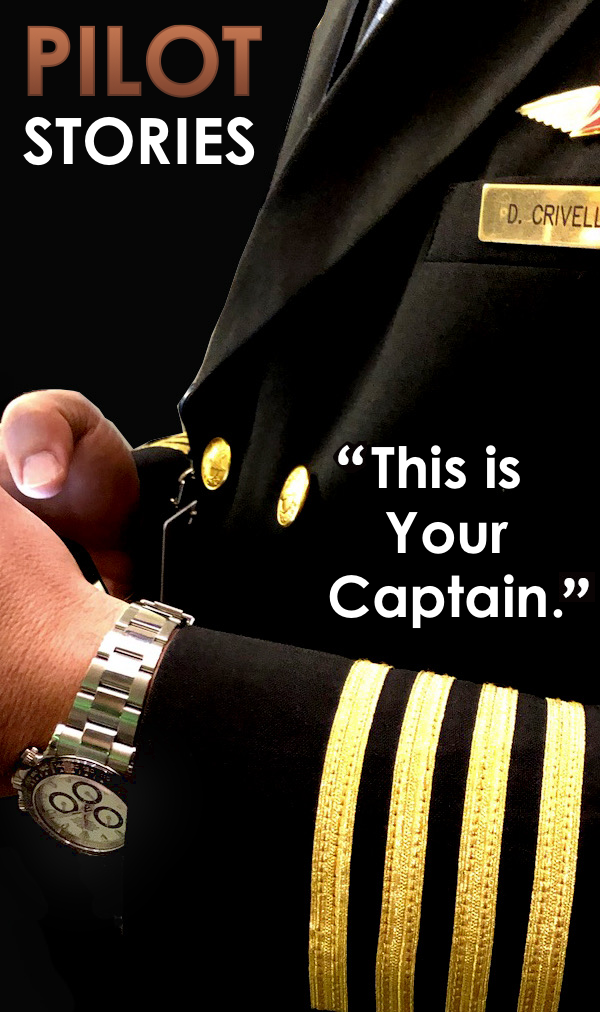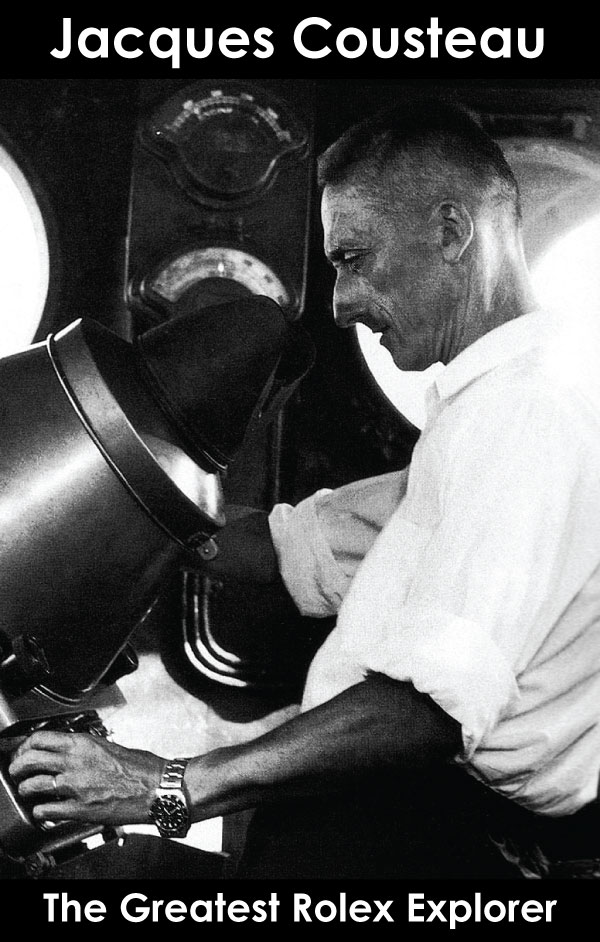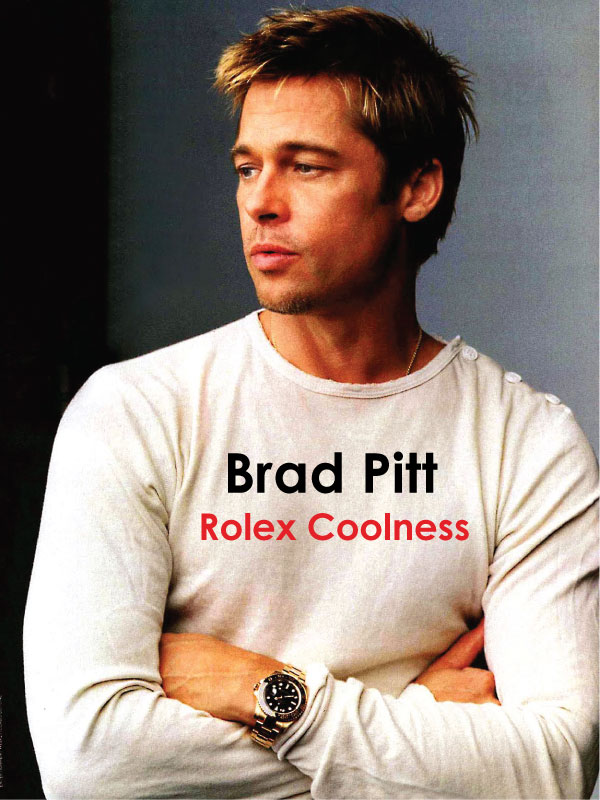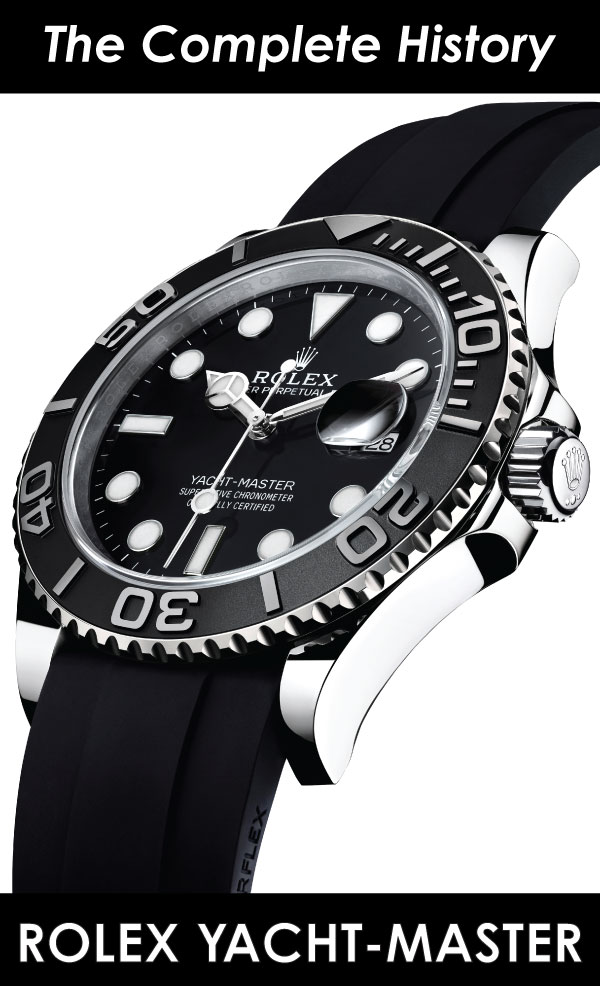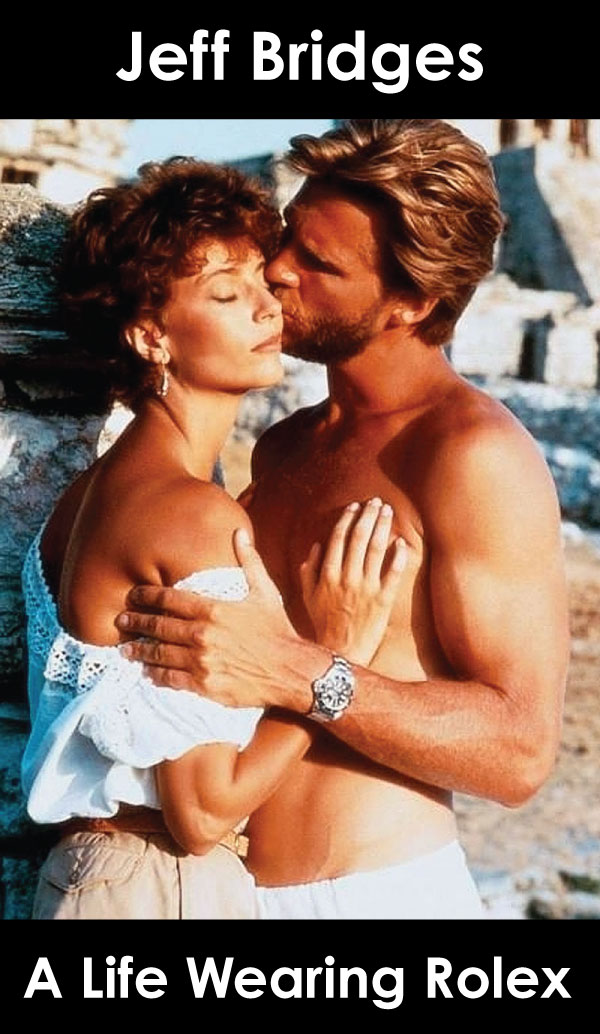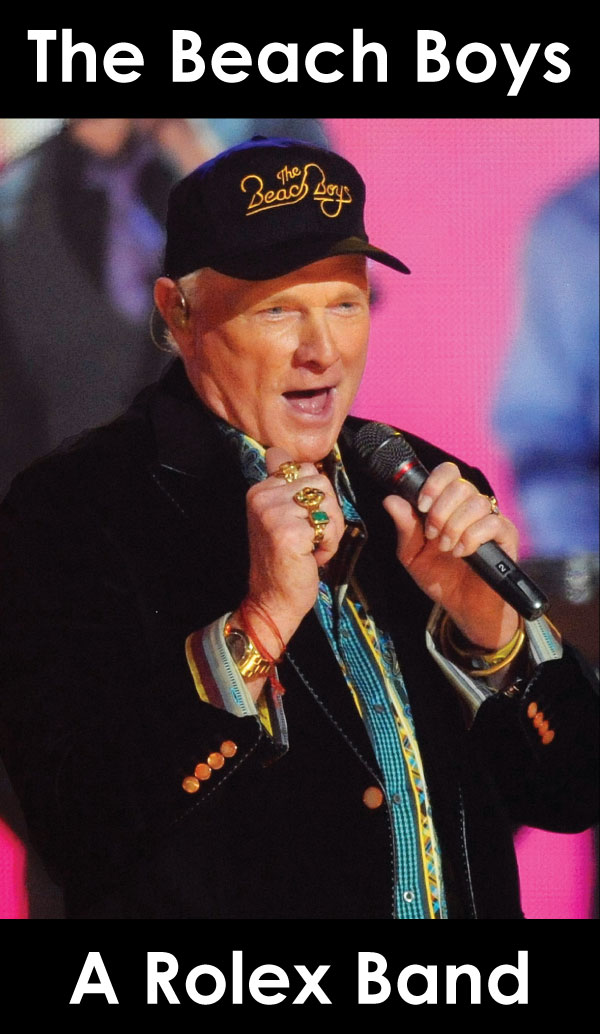The Complete History Of
The Rolex Submariner & SEA-DWELLER
Rolex's Conquest Of The Ocean
CHAPTER 19
Part 5 of 6
CHAPTER 19
Part 5 of 6
Jacques-Yves Cousteau
Project Conshelf
From Submariner to SEA-DWELLER
In September 1962, Jacques Cousteau immersed his Calypso crew into their most ambitious adventure to date known as the Conshelf Project. The Conshelf project was the brainchild of a U.S. Navy Medical Corps., Captain named Dr. George Bond. Dr. Bond conceived a new method of diving known as the "saturation method" which became know as "saturation diving."
Saturation diving created an underwater habitat where the divers could live in an underwater house/structure/habitat so they could work on the sea floor, without having to decompress by coming up to the ocean's surface after each dive.
Dr. Bond submitted his plan to build this underwater habitat for saturated divers to the U.S. Navy and the U.S. Navy initially rejected the idea–so Dr. Bond submitted his idea to Jacques Cousteau and his Calypso diving team–and after careful evaluation Cousteau decided to undertake the project.
Conshelf I
Conshelf I [September 1962] Location: Frioul Island, Marseille, France
Conshelf I got underway in September of 1962, and according to Jacques Cousteau, the objective was "Two men living for one week in a small building at a depth of 37 feet and working several hours a day at 65 feet." The Conshelf I structure was essentially a huge drum about the size of an industrial shipping container that was ballasted with an open hatch for the divers to enter and exit the underwater house.
In the photo below we see Conshelf I's barrel shaped habitat being tested for leakage before being submerged for the experiment. I may be wrong, but I think I recognize fellow DEEP-SEA Submariner, Jacques Piccard up on the top deck, leaning back, in the white shirt with dark slacks filming with a camera in his hand.
Jacques Coustea previously worked with Jacques Piccard on the Bathyscaphe Project, and would work with Piccard again in 1964 on a new floating laboratory nicknamed "Mysterious Island" and again in 1965 from April 13 to May 10 on a geophysical and acoustical mission along the south coast of France.
It is kind of shocking we have never seen a photo of the two Jacques together, but this may be the first one. Cousteau, of course, is located in the bottom right hand corner of the photo on the deck of the Calypso.
The First SEA-DWELLER's In History
Albert Falco and Claude Wesly of the Calypso diving team (pictured below wearing red caps) swam into history when they became the first "Oceanauts [French]" or "Aquanauts [American]" or "SEA-DWELLER'S [ROLEX]" to live or "DWELL" under the sea. Also in the photo below we see Jacques Cousteau visiting with Falco and Wesly inside the Conshelf I habitat.

As I mentioned earlier, Albert Falco was Jacques Cousteau's lead diver and right-hand-man. The photo of Falco below was taken 7 years earlier on the deck of the Calypso in 1955 during the filming of The Silent World.
Albert Falco is my favorite member of Jacques Cousteau's dive team. He was such a cool guy. Super low key and unpretentious, yet loyal and and extremely talented diver.
The next four images appear courtesy of Military Watch Blog and feature photos of Albert Falco, wearing Rolex watches. This first image is captured from a scene in The Underwater World of Jacques Cousteau and shows Falco wearing a Rolex Submariner in 1967.
In the next image we see Albert Falco wearing his Submariner while hanging out with Jacques-Yves Cousteau.
In the next image below, we see Albert Falco wearing a Rolex SEA-DWELLER in Brazil in 1981 as he feeds a small seal. This is really profound as we see the first photographic evidence of the very first man to live and dwell in the sea, wearing a Rolex SEA-DWELLER watch.

The image below is a blow up of the one above, in which you can clearly make out the helium release valve on his Rolex SEA-DWELLER.
Conshelf II
The Conshelf I project was extremely successful and Cousteau went directly on to the much more ambitious Conshelf II Project. Conshelf II explored the effects of a much longer duration stay living under the sea–for a month. Conshelf II also explored the effects of a week-long stay at 82 feet in a habitat filled with an oxygen-helium mixture with the inhabitant divers leaving the habitat to do daily work below 160 feet.
Conshelf II [June 1963] Location: Shab Rumi, Sudan, Red Sea
The photo below is of "The Starfish House" floating in the water on the right side of the photo, which was the primary structure of Conshelf II complex. The big circular structure on the left is the garage for the diving saucer which is being assembled for submersion. (Notice in the water color illustration above that the diving saucer located in the bottom right hand side of the image has left the garage and is headed for much deeper water). The Calypso diving team that lived aboard Conshelf II really were dwelling in the sea or SEA-DWELLERS.
Shab Rumi, located in the Red Sea, off the coast of Sudan was intentionally chosen since it was so far away from the location of Conshelf I. This was proof of concept that a huge industrial undertaking like this could be executed in a far-away, remote area.
In the photo below, two of the Cousteau Conshelf II divers relax over a game of chess in the Starfish house and enjoy a cigarette.
Conshelf III
In 1965 Calypso undertook its most ambitious and last Conshelf project named Conshelf III which was a spherical structure designed to house six Cousteau team divers including Jacques Cousteau's son Philippe.

Conshelf III [1965] Location: Cape Ferrat, Off the coast of Villefranche
The photo below is of three of Cousteau's Conshelf III divers checking in their equipment after a daily work dive at close to 400 feet.
The movie poster below is from the Academy Award Winning Jacques-Yves Cousteau Documentary titled, "World Without Sun". Notice it refers to the SEA-DWELLERS as "Oceanauts", as apposed to "Aquanauts".
The SEALAB Story

The SEALAB story is a very deep story (pun intended :-) In the photo below we see SEALAB Aquanaut, Scott Carpenter wearing his prototype Rolex SEA-DWELLER, as he is interview with his beautiful wife, Rene Carpenter.
Philippe Cousteau was Jacques-Yves Cousteau's son, and in the photo below we see Philippe suiting up for a dive during SEALAB III. It is important to note that Philippe Cousteau and his father, Jacques Cousteau were always in close contact with the members of SEALAB, as Operation Conshelf and SEALAB ran concurrently.
Philippe-Piere Couteau is pictured below with his legendary father Jacques-Yves Cousteau, and Jacques seems to be admiring his sons Rolex SEA-DWELLER.
Philippe Cousteau's Double Red Patent-Pending SEA-DWELLER is pictured below in a recent photo from an Antiquorum Auction. The caseback on this watch has an interior date stamp from the fourth quarter of 1967 that reads IV.67, with the serial number of 1,602,920.
In the recent photo below, we see Philippe Cousteau Jr., wearing his Rolex SEA-DWELLER.
Jacques-Yves Cousteau is pictured below with his two sons, Jean-Michel, and Philippe in 1953 onboard the Calypso.
Jacques-Yves Cousteau is pictured below with his son, Jean-Michel Cousteau in 1989 in Papaua, New Guinea, and notice Jean-Michel is wearing his stainless steel Rolex Sea-Dweller.
In the photo below, we see Jacques-Yves Cousteau late in his life, wearing a Rolex Submariner over his diving suit cuff.
Below is a list that shows the dates, and depths of the Genesis, Conshelf, SEALAB and Tektite campaigns:
- Genesis: Ran from 1957 to 1963
- Conshelf I: 1962 [September off of coast on Frioul Island, Marseille, France]
- Conshelf II: 1963 [June of coast in Shab Rumi, Suday, in the Red Sea]
- SEALAB I: 1964 [192 Feet Deep off the Coast Of Bermuda]
- SEALAB II: 1965 [August 28, Of Coast of La Jolla, California Depth of 205 Feet/62 Meters]
- Conshelf III: September 1965
- Janus I: [COMEX October 1968]
- SEALAB III: 1969 [February 15. Off San Clemente Island in California. Depth of 610 Feet/185 Meters]
- Tektite I: 1969 [February 15, Off Great Lameshur Bay, in U.S. Virgin Islands]
- Tektite II: May 1970
- Janus II: [COMEX September 1970]
- Janus III: [COMEX Pressure Chamber in Marseille October 1974]
- Janus IV: [COMEX October 1977]
If you really want to learn more about this amazing story, I highly recommend reading my 18 Chapter Series titled "The Complete History Of The Rolex Submariner & SEA-DWELLER: Rolex's Conquest Of The Ocean."
If you want a simple overview, hop in the Rolex Time Machine by checking out the official SEALAB videos below:
1968
Dick Bertram
Rolex Submariner Ad
Dick Bertram was a boat making pioneer and legend. Today, his company still makes amazing boats. Among other things, Dick Bertram pioneered inventing the 'Cigarette' speed boats.
I'd like to be under the sea
In an octopus' garden in the shade
He'd let us in, knows where we've been
In his octopus' garden in the shade
I'd ask my friends to come and see
An octopus' garden with me
I'd like to be under the sea
In an octopus' garden in the shade.
We would be warm below the storm
In our little hideaway beneath the waves
Resting our head on the sea bed
In an octopus' garden near a cave
We would sing and dance around
Because we know we can't be found
I'd like to be under the sea
In an octopus' garden in the shade
We would shout and swim about
The coral that lies beneath the waves
(Lies beneath the ocean waves)
Oh what joy for every girl and boy
Knowing they're happy and they're safe
(Happy and they're safe)
We would be so happy you and me
No one there to tell us what to do
I'd like to be under the sea
In an octopus' garden with you

Ian Koblick was one of the aquanauts on Tektite I who wore a prototype Rolex Single Red SEA-DWELLER that was discovered by fellow Rolex fanatic, Philip Stahl who publishes The Rolex Passion Report. Ian Koblick is pictured above and below wearing his Rolex Single Red SEA-DWELLER prototype [Reference 1665].
Ian Koblick's prototype 1967 Rolex Single Red SEA-DWELLER that he wore during Project Tektite I is pictured below in a recent photo. To date, none of of the Single Red SEA-DWELLER prototypes from Tektite have appeared with helium release valves, which is strange for a few reasons. It might have something to do with the fact that the Tektite Habitat was in fairly shallow water, so maybe Rolex felt they did not need SEA-DWELLER models with the HRV. I believe there is one know example of the Single Red SEA-DWELLER that does have a helium release valve, but I don't know if it was from Operation Tektite.
In the photo below we see Ian Koblick pictured on the left, talking with an agent from the United States Ministry Of Interior. Pictured on the right is Richard A. Waller who is wearing his prototype Single Red Rolex SEA-DWELLER prototype.

Rolex Ambassador and Tektite II Aquanaut Dr. Silvia Earle is pictured above on the far left, as well as being pictured below entering the Tektite habitat. Divers on Tektite I & II wore and tested prototype Rolex Single Red SEA-DWELLER watches.

The Quartz Crisis got underway in the early 1970s, but in the early 1970s there were still many leading men who wore Rolex Submariner watches, including Roger Moore when he played James Bond. The photos below show Roger Moore playing James Bond in the 1973 movie titled, Live & Let Die, which had Bond wearing a Rolex Submariner Reference 5513.
Steve McQueen in 1973
[Reference 5512]
Steve McQueen, often referred to as the King Of Cool, was another high profile Hollywood actor that wore his Rolex Submariner Reference 5512, as we see in the photos below from 1973.

In the photo above and below, we see Steve MqQueen hanging out with his good Pal, Paul Newman, and we see Steve McQueen wearing his Rolex Submariner.
Paul Newman Daytona
In the early 1970s, Paul Newman got into racing cars and his wife, Joanne Woodward bought him a Rolex Daytona, as seen in the photo below. Paul Newmans's exotic white dial Daytona, would end up becoming a legend, in-and-of-itself.
Jeff Bridges
1976
1976
Jeff Bridges starred in the 1976 remake of King Kong, and we see him pictured below sporting his stainless steel Rolex Submarine from the movie. Jeff Bridges to this day, still wear a bunch of different Rolex Submariner models.

The Deer Hunter
1976
1976
Robert De Niro starred in the 1976 movie titled, The Deer Hunter, where he wore a Rolex Submariner as seen below.
The DEEP
1977
1977
The DEEP was an aquatic themed movie that featured Nick Note wearing a stainless steel Rolex Submariner, which was quite memorable. Jacqueline Bisset costarred beside Nick Nolte, and she was equally memorable.

Sylvester Stallone
1978
1978
In the photo below we seen actor, Sylvester Stallone in 1978 wearing a yellow gold Rolex Submariner, just after his blockbuster performance in Rocky.

ROLEX/COMEX
THE SEA-DWELLER LEGACY
Henri-Germain Delauze, the founder of the French diving company named COMEX is pictured below in 1970. COMEX is the acronym for Compagnie Maritine d'Exprtise. ROLEX and COMEX formed a relationship in the early 1970s that has endured to this day. COMEX's role in this story is fascinating. In a nutshell, Comex was the ultimate beneficiary of the Rolex SEA-DWELLER watch as it allowed men to work underwater in the DEEP-SEA.
Founder Of COMEX, Henri Delauze [1970]
The photo below shows COMEX founder, Henri-Germain Delauze wearing a Certina DS 2 Super PH 500M. My best guess is this photo was taken in the late 1960s.
The Omega French Connection
Rolex officially launched the SEA-DWELLER [Reference 1665] to the public in 1971/1972. In a bizarre twist of fate, COMEX divers had been wearing and testing prototype OMEGA SEAMASTER models. The Omega magazine ad below announced the relationship between Omega and Comex.
COMEX wore and tested OMEGA "Ploprof" models [Reference 3350: Caliber 1002]. The photo below shows an OMEGA SEA-MASTER Ploprof prototype that has COMEX and JANUS II engraved into the case. COMEX's JANUS II diving program began in 1970, thus COMEX could not have been working with Rolex on the development of the Helium Release Valve that was incorporated into the SEA-DWELLER prior to 1969.
Also, in an interview with COMEX's founder, Henri-Germain Delauze back in 2009 he specifically told me COMEX had been testing watches for Omega, when Rolex CEO, André Heiniger came to visit him in 1971, and offered to equip his entire team of DEEP-SEA divers with ROLEX/COMEX watches. Henri said, once that happened, we were completely done with Omega!
The Omega Magazine Advertisement below confirms this fact.
Inner Space Race
The photo below shows a really cool prototype Titanium OMEGA SEAMASTER 1000 Polprof that was tested by COMEX in 1971, just before they switched over to Rolex. The OMEGA Polprof worked in the opposite way of the Rolex SEA-DWELLER in the sense that instead of having a helium release valve, it was so sealed up that it would not allow helium to enter the case to begin with. Also, if you look closely at the OMEGA polprof, it kind of looks like a vintage Panerai case with the half-crescent crown protection system.
It is worth noting that Omega filed a patent for the SEAMASTER Polprof in 1967, which was the same year Rolex filed it's patent for the Helium Release Valve. The Polprof featured an interesting feature that locked the bezel and stopped it from being able to spin, unless you pressed on the orange button, thus requiring two hands to operate, whereas the Rolex Submariner and SEA-MASTER only rotated counter-clockwise, so you could not add time by mistake.
Henri-Germain also told me in an interview, COMEX never had any involvement in the development of the SEA-DWELLER or the Rolex Helium Release valve. An obvious question is why did Rolex offer to equip COMEX with Rolex watches? Was it because they thought they had lost to Omega in the field of outer space, so they wanted to make sure they dominated inner space?
Or maybe it was because there was other real possibility to test dive watches under real life conditions? Also, it may have had to do with the fact that Rolex was worried Omega was going to try and dethrone them with the SEA-MASTER Polprof, so they stepped up their game!?!!
The following letter from the Director of Rolex in Geneva regarding Rolex Singapore is fascinating as it discusses the testing of a Rolex SEA-DWELLER Prototype, and how COMEX had recently taken over testing in early 1972.
The photo below is the first known photo of Henri-Germain Delauze wearing a Rolex Submariner and it was taken in 1972. Henri-Germain sent me this image with a bunch of photos from his archive.
Another obvious question is if Rolex developed the SEA-DWELLER in 1967, how is it that the U.S. Navy SEALAB and Tektite operations did not receive and start testing them until 1969? This is simple to answer when you do the math. The Rolex patent application stated the Rolex SEA-DWELLER was not first used until November 6, of 1967. SEALAB (and assumably Tektite] received their prototype Rolex SEA-DWELLER prototypes in January of 1969, which was fourteen months later. This was due to the fact Rolex had to wait until SEALAB 3 and Tektite I were launched, as nobody else was conducting such deep saturation dives that placed aquanauts in undersea dwellings under real life conditions.
So if the Rolex SEA-DWELLER was developed and tested by The U.S. Navy SEALAB and Operation Tektite, who ended up being the ultimate beneficiary of the SEA-DWELLER? A French company named COMEX. I interviewed COMEX's charismatic founder Henri-Germain Delauze back in 2009, just before he passed away. During our interviews I mentioned to him that it was ironic that the COMEX ROLEX Submariner and SEA-DWELLER watches were so popular among vintage Rolex collectors, and it was ironic there was not one photo of him wearing his trademark COMEX ROLEX, where you could see the COMEX logo on the watch.
I asked Henri if he would pose for some exclusive photos for Jake's Rolex World, and he obliged as seen in the two photos below. Not to mention the last opportunity to test the Rolex SEA-DWELLER watches prior to SEALAB and Tektite would have been during Conshelf II, and SEALAB II, back in 1965. In other words, there would not have been any kind of meaningful opportunity to test the SEA-DWELLER in the DEEP-SEA prior to February of 1969.

The French COMEX/Cousteau Connection
I included this profound photo of Hernri-Germain Delauze that was taken in Southern France in Fontaine de Vaucluse in 1955 and it shows a young Jacques-Yves Cousteau at 45 years of age standing in front of a much younger Henri-Germain Delauze–at age 26–who would go on to found the revolutionary French diving company, COMEX. At the time Dalauze was a Cousteau team diver.
This image is so profound I decided to crop and zoom it in for you. What makes this image so profound? It is an image of two French diving revolutionaries. Two men who would forever change the world of diving.
Jaques-Yves Cousteau co-invented the Aqua-lung which brought SCUBA Diving to life and Henri-Germain Delauze ended up being perhaps the greatest beneficiary of this technology. It is so profound to consider the man on the right in the picture below taken 59 years ago is the same man pictured at the top of this story!!!
French Diving Pioneers Jacques-Yves Cousteau & COMEX founder Henri-Germain Delauze in 1955
What Is A Rolex COMEX Watch?
Before we go in-depth on Henri-Delauze's amazing career achievements, let's explore what a Rolex COMEX watch is so we may understand the significance of the relationship between Rolex and COMEX. I will admit, that as a Rolex historian, the Rolex COMEX history or story has been, perhaps, the single most confusing and challenging stories for me to wrap my head around. Why? I don't know for sure! I think it is because COMEX is a French company, and what they do is so esoteric, that is was difficult for me to understand. DEEP-SEA diving in general, for the lay-man is almost arcane.
On a side-note, I always try to share Rolex history so it is not only fascinating and educational, but I always try to do it so a 3rd grader can understand it, and this story–as I just mentioned–has been very challenging to do so with, but I believe I have achieved doing so.
In the early 1970s, Rolex CEO Andre Heiniger became fascinated with Henri-Germain Delauze's amazing career achievements and in particular, Andre was fascinated with the future direction of COMEX's deep sea exploration.
Andre Heiniger reached out to Henri-Germain Delauze and formed a strategic partnership. The terms of the partnership was that Rolex would provide all COMEX divers with special Rolex Submariner and SEA-DWELLER watches at no cost, in exchange for COMEX providing Rolex with detailed performance analysis.
In order to differentiate the COMEX Rolex Submariner and SEA-DWELLER models from standard versions, Rolex decided to created a special "COMEX" dial designation that placed the COMEX logo above the model name on the watches. In the next three photos that Ryan took of his Rolex COMEX Submariner, we see the COMEX designation. This first image shows the COMEX designation up close.

This next image shows the same dial as pictured above. The rarest Rolex COMEX models are Submariner models. The vast majority of Rolex COMEX models are Rolex COMEX SEA-DWELLER models, so the version below is very rare and valuable.

The vast majority of Rolex COMEX Submariner and SEA-DWELLER watches have a helium escape release valve as pictured below. All Rolex COMEX watches are extremely popular with collectors and have achieved almost a cult-like status. Having a COMEX model designation on the dial and case back often increase the value of the Rolex by more than 10 times. Typically COMEX Rolex watches are worth at least $50,000 or more!!!

The COMEX Company
Henri-Germain Delauze founded COMEX in 1961. COMEX is the acronym for Compagnie Maritime d'Expertises, which translated from French to English means "Expert Maritime Company."
COMEX has always been headquartered in Marseilles, France, and you can see their facility pictured below. COMEX headquarters are equipped with hyperbaric testing facilities and a testing pool.

Henri-Germin Dealuze was an early pioneer in Saturation diving and specialized in engineering and building deep sea oil rigs out in the middle of the ocean. These offshore oil rigs were essentially like having a factory out in the middle of the ocean that produced oil.



COMEX divers also specialized in all kinds of underwater construction including underwater pipelines that concocted the world with all kinds of things like oil, fresh-water and telephone lines.


COMEX also specialized in underwater treasure hunting as well as underwater reconnaissance, as we see in this piece of COMEX artwork.

Rolex COMEX SEA-DWELLER Ads
Rolex never sold Submariner or SEA-DWELLER models with the COMEX logo designation to the public, but they showcased their relationship with COMEX in magazine ads for the Rolex SEA-DWELLER. This first Rolex SEA-DWELLER ad is from 1975 and it features the amazing DOUBLE-RED SEA-DWELLER dial designation that is highly coveted by collectors.
Alain Jourde and Claude Boardier are featured in the Rolex COMEX magazine above and in this photo from the COMEX archives we see them in the COMEX habitat both sporting their Rolex SEA-DWELLER models. Of course, 610 Meters is equal to 2000 feet. 51 Heures when
Rolex continued development of the Submariner and SEA-DWELLER through the 1970s, and continued to support research programs that depended upon the Submariner, as seen below in this 1975 Rolex ad featuring Dr. Joe Macinnis.
The 1975 Rolex Ad below features Peter Benchley in a Rolex Submariner ad. Peter Benchley was good friends with T. Walker Lloyd.


Project Janus 4
COMEX Hydra 8
This 1991 Rolex COMEX magazine add for the Rolex SEA-DWELLER showcases some fascinating COMEX achievements from the COMEX Hydra 8 mission. The COMEX Hydra 8 set the all-time record for off-shore, DEEP-SEA diving-depth. COMEX was working on a Mediterranean pipe-line which was 1752 feet (534 Meters) deep.
The Legendary Rolex DEEPSEA
COMEX DEEPSEA Waterproofing Machine
COMEX has worked with Rolex since the early 1970s, and designed and custom-made this one-of-a-kind testing machine that is used just to test Rolex DEEPSEA SEA-DWELLER models for waterproofing.
This thing looks like it is right out of a James Bond movie. Kind of like it was taken from the laser-cutting table in Goldfinger.
The formal name of this machine is The Rolex DEEPSEA TEST TANK, and it was designed specifically to test the Rolex Oyster Perpetual DEEPSEA, which is guaranteed waterproof to an extreme depth of 12,800 feet (3,900 Meters).
As previously mentioned the hyperbaric tank was designed and built by COMEX engineers for Rolex, and Rolex tests 100% of its Rolex DEEPSEA watches at extreme pressure of 495 bars, which is equal to the pressure of a depth of 4,975 meters, which is 25% greater than the guaranteed rating.



The Return Of
The Single RED SEA-DWELLER
50th Anniversary Celebration
Table Of Contents
• Part 1: BaselWorld 2017: The Return Of The Single Red SEA-DWELLER.
• Part 2: Rolex SEA-DWELLER 50th Anniversary Jubilee Celebration.
• Part 3: 1953 & 1960 Rolex DEEP-SEA Prototypes: Testing On The Bathyscaphe Trieste.
• Part 4: From Exploring Outer Space to Inner Space: NASA Project Mercury to U.S. NAVY SEALAB.
• Part 5: Jacques-Yves Cousteau: From Submariner to SEA-DWELLER. Operation Conshelf to Operation Tektite, to The COMEX Rolex.
• NEXT>>> Part 6: From Finding The Titanic to The Return Of The Rolex DEEP-SEA.
Table Of Contents




































































